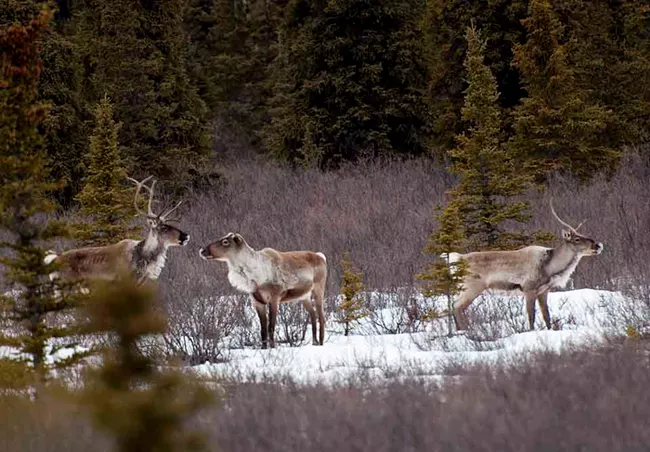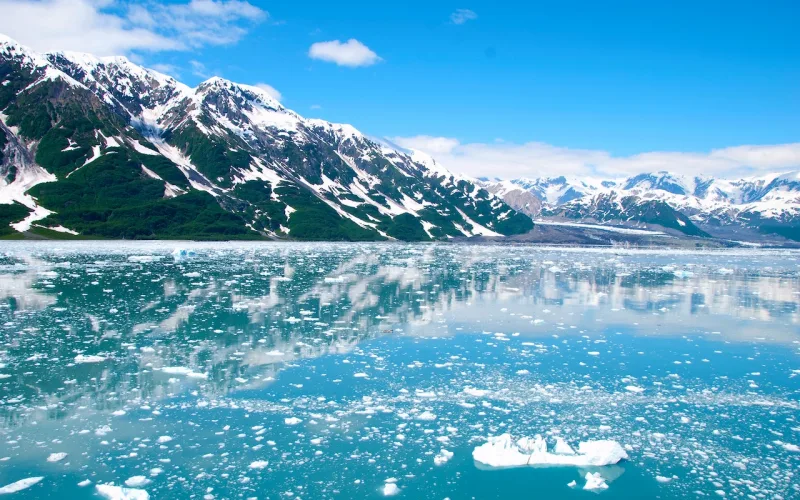Last Updated on May 14, 2024 by Ecologica Life
On Monday 13th March 2023, the US government approved the Willow Project. This was one of the most controversial environmental issues of the year. The decision came after months of intense lobbying and millions of online petitions and TikTok videos against the Willow Project. After the lack of serious commitments at the recent COP27 climate summit, environmentalists felt it was a stinging blow.
Does the new Willow project undermine US efforts to phase out fossil fuels? Or is it just a symptom of our dependence on oil in the transition to a non-oil economy?
Table of Contents
What Is the ConocoPhillips Willow Project?

Willow is an oil drilling project in Alaska. The project is led by ConocoPhillips which will spend an estimated $8-10 billion on the project.
The area is located on the north slopes of Alaska and is part of the National Petroleum Reserve-Alaska (NPR-A), the largest public land area in the US. The Navy Petroleum Reserves Production Act of 1976 officially opened the area to oil and gas development.
The Act designated certain areas for ‘maximum environmental protection’ and established special criteria for oil and gas development.
The NPR-A is an important habitat for polar bears and tens of thousands of migrating caribou and ducks. Yet it is also one of the most promising areas for new oil in the US.

Willow Project Pros and Cons
The Willow Project has sparked intense debate on all sides, with supporters saying the US needs this oil and opponents urging Biden not to go back on his word and push through legislation to avert climate catastrophe. Both arguments have some merit:
Willow Project Pros
The White House argues that fresh oil from Alaska will help ensure that the US has a stable domestic energy supply. This is crucial to reducing the dependence of the nation and its allies on oil suppliers. Foreign oil suppliers may operate under autocratic regimes and have lax environmental regulations when compared to the US.
In Alaska, state officials and many Alaska Natives say they need to boost a flagging economy. The project will provide jobs for thousands of people. Willow is also expected to generate billions of dollars in economic activity and tax revenue.
Willow Project Cons
The obvious Willow project disadvantages are that the project is expected to produce a large amount of oil over the next 30 years. Burning this oil could result in the release of an additional 278 million tonnes of climate-changing carbon emissions. That’s about four per cent of the US emissions in 2021.
If the US and Europe are to meet their target of net zero emissions by 2050, emissions need to fall rapidly. This makes the Willow project all the more controversial at a time like this.
Sadly, it is a sign that we are NOT on the right track to wean ourselves off fossil fuels as quickly as we need to.
And while many Alaskan officials want the economic benefits of an oil drilling project, no one wants to live near one. Locals living in Nuiqsut, the village closest to the project, are opposed to Willow. This is because they expect the worst of the negative impacts.
Oil projects have a negative impact on local wildlife, air quality and can lead to potential environmental disasters from oil spills. The Exxon Valdez oil spill that occurred on March 24 1989 is a prime example. This resulted in the widespread death of marine life along the Alaskan coast of Bligh Reef. It led to the creation of the Oil Pollution Act, which allows the EPA to respond quickly to oil spills.
It has probably damaged President Biden’s reputation. Biden now looks like a hypocrite because he has often advocated other nations to pursue cleaner alternatives to oil and natural gas.
Why Did President Joe Biden Approve Willow?
The approval of the Willow project has shocked and outraged many environmentalists. President Biden promised to stop all new oil drilling on federal lands when he took office. This has led some to believe that he was greenwashing all along.
There are two reasons why the Biden administration has approved this project. The first reason is legal; ConocoPhillips has held leases in the NPR-A since the 1990s.
Trying to stop them from drilling could have led to a court case, which ConocoPhillips would probably have won. Taxpayers would have lost millions or billions of dollars. And they would have been able to continue drilling anyway.
The second reason is that Biden has also promised voters that he would address the high cost of oil and gasoline. The energy crisis of 2022 was deeply felt by the public. Oil and gasoline prices rose sharply after the start of the war in Ukraine.
In the recent months, Biden has acknowledged that oil still plays a role in the economy. This reflects a larger part of the problem: the US and many other countries are still largely dependent on oil. Limiting supply would raise prices, which is not what the public wants.
The Biden administration says it has significantly reduced the size of the Willow project. It denied ConocoPhillips two of the five proposed drilling sites after an environmental review. Environmental groups have said that the review was not thorough enough.
They have also made the company to relinquish leases on other land in the area. But these future restrictions have been described as ‘legally dubious‘.
Biden’s biggest climate programmes to date have focused on expanding consumer use of clean energy, rather than curbing fossil fuel production. For example, the Biden administration wants to power about 9.5 million homes with renewable energy by 2025.
Can the Willow Project be Stopped?
Environmental groups have taken legal action to try to stop the Willow project. Two separate lawsuits have been filed against the Willow project.
Alaska Wilderness League, Trustees for Alaska, Sierra Club and Sovereign Lupiat for a Living Arctic filed a lawsuit on Tuesday 14th of March.
They claim that by approving the project, the US Department of the Interior has violated its own climate change policies.
A coalition of environmental groups, including the Natural Resources Defense Council, the Center for Biological Diversity, and Greenpeace, allege that the government finalised the permit without addressing objections raised in a separate lawsuit filed in 2021.
The organisations were seeking an injunction that ultimately failed. ConocoPhillips relies on ice roads to build its oil project. If construction was delayed beyond April, it could be blocked for at least a year.
However this was not the case, on Monday 3rd of April 2023, federal judge Sharon Gleason of the US District Court of Alaska ruled in favour of the federal government allowing the construction of the Willow project to continue as planned.
Despite this, environmental groups continue in their court battle to stop the Willow Project from happening.
Should the Willow Project be Stopped?
By 2030 governments are expected to be producing is twice the amount of fossil fuels needed to limit global warming to 1.5ºC.
Projections for fossil fuel production are also higher than the less ambitious 2ºC target agreed in the Paris Agreement. Experts have warned that failing to meet the 2ºC limit could be catastrophic for our planet and of course, for us.

We don’t have to stop using oil right away. According to one report, the world could still produce 40 million barrels of oil a day in 2040 and stay on track to limit global warming to 1.5 degrees. To put this in context, global production in 2022 was about 100 million barrels a day, a new record.
Some have argued that the remaining oil emissions could be offset by negative emissions. This could be through either natural (trees and algae) or artificial (technology) carbon sequestration. However, this is a slippery slope because negative emissions rely on removing carbon from the atmosphere. Not all greenhouse gas emissions can be offset by negative emissions and air pollution can have its own economic costs.
To meet climate targets, oil production will have to fall in the coming decades. Humanity can only rely so much on negative emissions.
Will the willow project be cancelled? Most likely no. Many people are angry with Biden. But the United States is not alone in failing to restrict the exploitation of domestic fossil fuel resources. Few nations are willing to do so.
Norway and Canada, two wealthy developed nations with high carbon taxes, continue to giver the green light on new oil and gas extraction. Colombia’s new left-wing government of President Gustavo Petro has not followed through on promises to block new oil exploration, fearing it will not be able to make up the lost revenue.
This is also the reason why countries with low fossil fuel revenues are forming coalitions, such as the Beyond Oil and Gas Alliance, whose members (including Denmark and Costa Rica) have pledged to phase out fossil fuel extraction.
In response to the 2020 energy shock, governments increased subsidies for fossil fuel consumption by a record $1 trillion. European governments even abandoned plans to stop drilling in the North Sea. What we have seen in 2022 is that the public does not want to pay higher energy and fuel prices.
Restricting the supply of fossil fuels to create a ‘shadow carbon price‘ is therefore politically unfeasible because of the public backlash. On the other hand, introducing carbon taxes that would reduce the demand for fossil fuels is difficult to pass and may not be enough to encourage a real shift to renewables.
It is undoubtedly difficult to manage the energy mix transition. This is what academics such as Sara Hastings-Simon and Emily Grubert call the ‘mid-transition‘, where fossil fuels and zero-carbon systems must coexist while being constrained by each other. Imagine a country where 70% of people commute in electric cars. Which companies would manage the remaining 30% of petrol stations? Who will maintain leaky drilling sites when some oil and gas companies go bankrupt?
Environmentally conscious governments still often approve new oil and gas projects for reasons similar to those that led the US to approve the Willow project.
First, they claim that if they don’t produce the oil, other nations will. Some other countries may have laxer environmental laws. Conversely, they may be ruled by unfriendly tyrants who use the money from oil to finance invasions or repression. Besides, since the oil is going to be pumped anyway, so why not make sure that the jobs and the money stay at home?
The second argument for developing fossil fuel projects is that it is better to reduce the demand for fuel rather than to reduce the supply of oil and gas. Since governments are reluctant to allow supply reductions that lead to higher costs and therefore lower demand, this argument also has some merit.
If you fight projects like Willow and succeed, you are unlikely to affect the demand for oil; the US will just get its oil from somewhere else, at a higher price. The price for oil goes up for the consumer, but the demand remains roughly the same.
Limiting the supply of fossil fuels is challenging because different actors want to profit from selling them and the public wants to enjoy low prices when they buy them.
Since the Biden administration cannot directly reduce demand by taxing fossil fuels or directly reduce supply by stopping drilling for them, it could consider a third option: restricting the availability of technology that burns fossil fuels. Although this is usually unpopular because it affects a lot of businesses, it is at least more politically feasible to tax or ban the installation of new fossil fuel-powered equipment in the future, such as vehicles, furnaces or boilers.
But for this to happen, renewable energy technology and the infrastructure to support it must already be in place. We cannot switch to electric cars today if we do not have the power stations to support them. Similarly, systems must be in place to recycle the materials at the end of their life, such as the electric car batteries. Toyota and Nissan have found interesting uses for their old electric car batteries.
Governments should therefore consider investing in infrastructure to support renewable energy technologies so that the consumers can make the switch. Once the infrastructure is in place, governments can then start taxing fossil fuel-based technologies, to encourage the switch to the renewable alternative. The Netherlands is a leading example of this.
Technology will undoubtedly lead the way in solving the climate crisis. We need to focus our energy on providing consumers with renewable energy sources to reduce their carbon footprint.
Read here should we end fossil fuel subsidies?
Europe’s Zero Pollution Plan: In Progress
Stop Drinking Tea from Teabags! They Have Plastic
Are You Wearing Sustainable Clothes?
A Guide to Forever Chemicals (PFAS)
The Ozone Layer: Past, Present and Controversy








